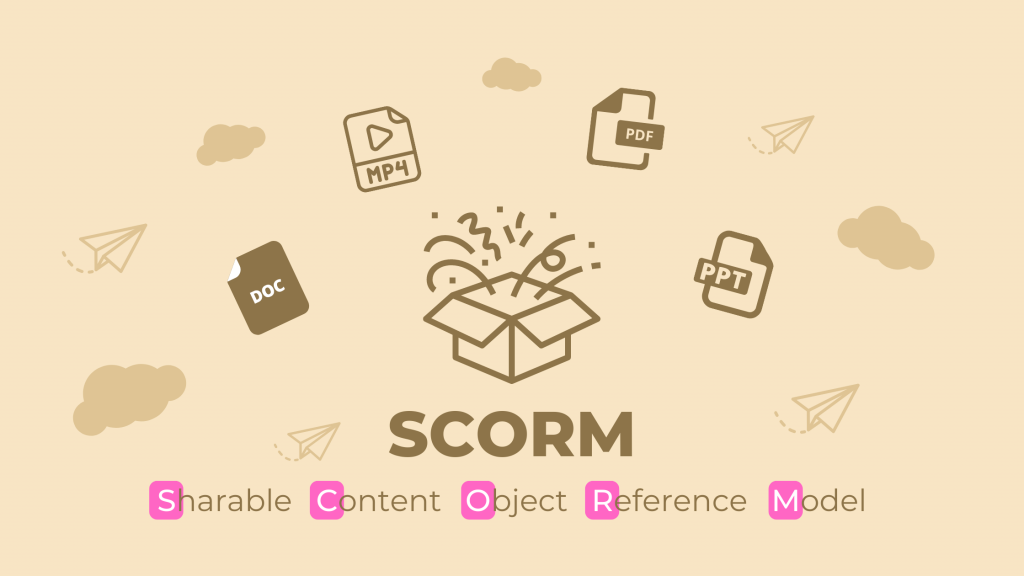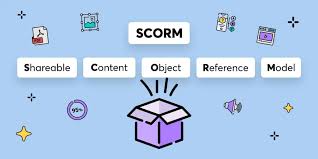Understanding SCORM: A Comprehensive Guide for eLearning Professionals

In the world of eLearning, acronyms like SCORM often surface in discussions about course creation and delivery. For educators, instructional designers, and eLearning developers, understanding SCORM is essential for creating and deploying content that is both effective and widely compatible. This post aims to demystify SCORM, covering everything from its origins and importance to practical implementation and future trends.
What is SCORM?
SCORM (Sharable Content Object Reference Model) is a set of technical standards for eLearning software products. SCORM tells programmers how to write their code so that it can “play well” with other eLearning software. It’s a standardized way of packaging content so that it can be shared, reused, and tracked across various Learning Management Systems (LMS).
The Origins of SCORM
SCORM was developed by the Advanced Distributed Learning (ADL) Initiative, a project sponsored by the U.S. Department of Defense in the late 1990s. The aim was to create a universal standard that would allow eLearning content to be interoperable across different systems. Prior to SCORM, content developers faced significant challenges when trying to deliver courses across various platforms, each with its own proprietary specifications.
Key Components of SCORM
SCORM is composed of several key components that make it functional:
1. Content Packaging: SCORM specifies how eLearning content should be packaged into a self-contained unit called a Content Package, typically delivered as a ZIP file. This package includes all the necessary files and metadata for the content to be launched and tracked by an LMS.
2. Run-Time Environment: This defines how the content interacts with the LMS during runtime. It involves the launch process, the communication protocol between content and LMS (using JavaScript API), and the tracking of learner progress.
3. Sequencing and Navigation: SCORM 2004 introduced a standard way of defining how learners navigate through content and the sequence of learning activities. This allows for more sophisticated eLearning experiences, such as branching scenarios and adaptive learning paths.
Why is SCORM Important?
SCORM is critical for several reasons:
1. Interoperability: SCORM-compliant content can be used across any SCORM-compliant LMS, ensuring broad compatibility and reducing the need for costly custom development.
2. Reusability: Content can be reused across different courses and systems, saving time and resources.
3. Durability: SCORM content remains functional despite updates to systems or changes in technology, ensuring longevity.
4. Adaptability: SCORM allows for content to be customized to meet specific needs without altering the underlying structure.
5. Tracking and Reporting: SCORM enables detailed tracking of learner interactions, including scores, completion status, time spent, and more. This data is invaluable for assessing the effectiveness of eLearning courses.

SCORM Versions: SCORM 1.2 vs. SCORM 2004
There are two main versions of SCORM in use today: SCORM 1.2 and SCORM 2004. Each has its own strengths and limitations:
• SCORM 1.2: The earlier and more widely adopted version. It provides basic tracking and reporting features and is easier to implement, making it the preferred choice for many organizations.
• SCORM 2004: Introduced more advanced features such as sequencing and navigation. It allows for more complex learning experiences but is also more challenging to implement.
Both versions are still widely used, but SCORM 1.2 remains the industry standard due to its simplicity and broad support.
Implementing SCORM in Your LMS
To implement SCORM content in your LMS, follow these steps:
1. Create or Source SCORM-Compliant Content: You can either develop SCORM-compliant content using authoring tools like Articulate Storyline, Adobe Captivate, or others, or purchase ready-made SCORM courses.
2. Upload to LMS: Log in to your SCORM-compliant LMS (like Acadle) and upload the SCORM package. The LMS should automatically recognize and deploy the content.
3. Test the Content: Ensure that the content launches correctly and tracks learner data as expected. This includes checking for progress tracking, quiz scores, completion status, etc.
4. Monitor Learner Progress: Use your LMS’s reporting tools to monitor learner progress and performance.
The Future of SCORM
While SCORM has been the gold standard for eLearning interoperability for over two decades, new standards are emerging. The most notable is xAPI (Experience API), also known as Tin Can API. xAPI offers more flexibility and the ability to track a wider range of learning experiences, including offline and mobile learning. However, SCORM remains widely used, and many organizations will continue to rely on it for the foreseeable future.
Conclusion
SCORM has been instrumental in shaping the eLearning landscape, providing a reliable and consistent way to deliver and track learning content across various platforms. Whether you’re a seasoned eLearning professional or just starting, understanding SCORM is crucial for creating effective, engaging, and compliant eLearning experiences. As the industry evolves, staying informed about SCORM and emerging standards like xAPI will help you stay ahead in the dynamic field of eLearning.
By understanding and leveraging SCORM, organizations can ensure that their eLearning content is not only effective but also versatile and long-lasting. Whether you’re using SCORM 1.2 or SCORM 2004, the benefits of adopting this standard are clear: enhanced compatibility, greater flexibility, and improved learner outcomes.